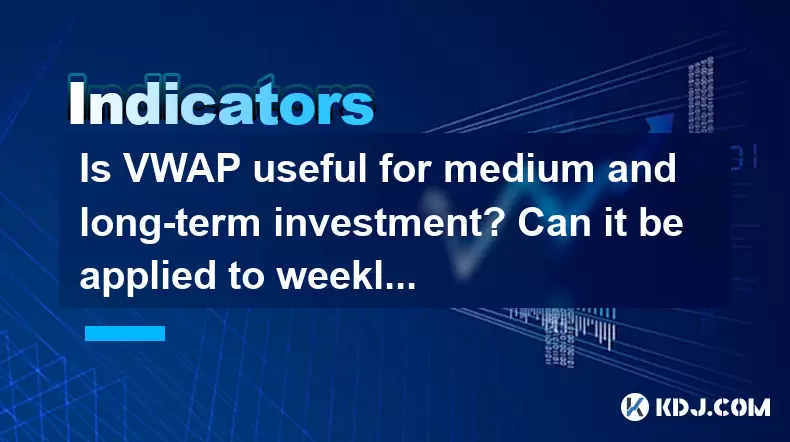-
 Bitcoin
Bitcoin $118200
-2.76% -
 Ethereum
Ethereum $4549
-3.53% -
 XRP
XRP $3.082
-5.55% -
 Tether USDt
Tether USDt $1.000
0.04% -
 BNB
BNB $840.1
0.07% -
 Solana
Solana $194.3
-2.22% -
 USDC
USDC $0.9998
0.00% -
 TRON
TRON $0.3591
-0.42% -
 Dogecoin
Dogecoin $0.2244
-7.13% -
 Cardano
Cardano $0.9017
3.20% -
 Hyperliquid
Hyperliquid $45.67
-2.41% -
 Chainlink
Chainlink $22.42
-5.44% -
 Stellar
Stellar $0.4253
-5.34% -
 Sui
Sui $3.756
-5.44% -
 Bitcoin Cash
Bitcoin Cash $590.7
-3.14% -
 Ethena USDe
Ethena USDe $1.001
0.00% -
 Hedera
Hedera $0.2493
-5.03% -
 Avalanche
Avalanche $23.66
-5.49% -
 Litecoin
Litecoin $121.5
-5.92% -
 Toncoin
Toncoin $3.421
-2.13% -
 UNUS SED LEO
UNUS SED LEO $9.276
0.30% -
 Shiba Inu
Shiba Inu $0.00001288
-6.44% -
 Uniswap
Uniswap $10.91
-8.59% -
 Polkadot
Polkadot $4.001
-4.71% -
 OKB
OKB $94.33
-9.04% -
 Dai
Dai $0.9998
-0.01% -
 Bitget Token
Bitget Token $4.549
-4.76% -
 Cronos
Cronos $0.1521
-7.71% -
 Ethena
Ethena $0.7361
-4.28% -
 Aave
Aave $312.0
-3.90%
Is VWAP useful for medium and long-term investment? Can it be applied to weekly and monthly lines?
VWAP can be adapted for medium and long-term investments by calculating weekly or monthly averages, helping identify entry and exit points based on volume-weighted prices.
May 22, 2025 at 06:21 am

Is VWAP Useful for Medium and Long-Term Investment? Can it Be Applied to Weekly and Monthly Lines?
The Volume Weighted Average Price (VWAP) is a widely recognized trading indicator used predominantly by traders to assess the average price at which a cryptocurrency has traded throughout the day, weighted by volume. While its primary use is in intraday trading, many investors wonder if VWAP can be effectively utilized for medium and long-term investment strategies and whether it can be applied to weekly and monthly timeframes. This article will explore these questions in detail, providing insights into the application of VWAP in various investment horizons.
Understanding VWAP and Its Traditional Use
VWAP is calculated by taking the total dollar value of all trading periods and dividing it by the total trading volume for the same period. The formula for VWAP is as follows:
[ \text{VWAP} = \frac{\sum (P_i \times V_i)}{\sum V_i} ]
Where ( P_i ) is the price and ( V_i ) is the volume for each period ( i ). Traditionally, VWAP is used by day traders to gauge whether a cryptocurrency is being bought or sold at a favorable price. If the current price is above the VWAP, it is considered overvalued, and if it is below, it is considered undervalued.
Applying VWAP to Medium-Term Investment
Medium-term investment typically refers to holding periods ranging from a few weeks to a few months. In this context, VWAP can be used to identify entry and exit points within these timeframes. By calculating the VWAP over a weekly period, investors can get a sense of the average price at which the cryptocurrency has been trading over the past week, weighted by volume.
To calculate weekly VWAP, you would need to aggregate the daily trading data for the week. This involves summing up the product of the price and volume for each day and then dividing by the total volume for the week.
Using weekly VWAP can help investors determine if the current price is a good entry point. For instance, if the current price is significantly below the weekly VWAP, it might indicate an undervalued asset, presenting a buying opportunity.
Applying VWAP to Long-Term Investment
Long-term investment often involves holding periods of several months to years. In this scenario, VWAP can be applied to monthly or even quarterly data to provide a broader perspective on the cryptocurrency's valuation.
To calculate monthly VWAP, you would need to aggregate the daily trading data for the month. This involves summing up the product of the price and volume for each day of the month and then dividing by the total volume for the month.
Using monthly VWAP can help long-term investors understand the average price at which the cryptocurrency has been trading over the past month. If the current price is significantly below the monthly VWAP, it might suggest a good entry point for long-term investment.
Practical Steps to Implement VWAP in Medium and Long-Term Strategies
To effectively use VWAP for medium and long-term investments, investors need to follow a systematic approach. Here are the steps to implement VWAP in weekly and monthly timeframes:
Collect Data: Gather the daily trading data for the cryptocurrency, including the closing price and volume for each trading day.
Calculate Weekly VWAP:
- Sum the product of the daily closing price and volume for the week.
- Divide the sum by the total volume for the week.
Calculate Monthly VWAP:
- Sum the product of the daily closing price and volume for the month.
- Divide the sum by the total volume for the month.
Analyze VWAP:
- Compare the current price to the weekly or monthly VWAP.
- If the current price is below the VWAP, consider it a potential buying opportunity.
- If the current price is above the VWAP, consider it a potential selling opportunity.
Monitor and Adjust:
- Regularly recalculate the weekly and monthly VWAP to stay updated on the cryptocurrency's valuation.
- Adjust your investment strategy based on the latest VWAP calculations.
Limitations and Considerations
While VWAP can be a useful tool for medium and long-term investment, there are several limitations and considerations to keep in mind:
Historical Data Dependency: VWAP relies on historical trading data, which may not always predict future price movements accurately.
Volatility: Cryptocurrencies are known for their high volatility, which can impact the reliability of VWAP calculations over longer periods.
Volume Fluctuations: Changes in trading volume can significantly affect VWAP, especially in less liquid markets.
Complementary Indicators: It is advisable to use VWAP in conjunction with other technical indicators and fundamental analysis to make more informed investment decisions.
Case Studies and Examples
To illustrate the application of VWAP in medium and long-term investment, let's look at a couple of hypothetical examples:
Example 1: Weekly VWAP for Bitcoin:
- Suppose an investor is looking to buy Bitcoin and calculates the weekly VWAP to be $30,000.
- If the current price of Bitcoin is $28,000, it might be considered a good entry point as it is below the weekly VWAP.
Example 2: Monthly VWAP for Ethereum:
- An investor calculates the monthly VWAP for Ethereum to be $2,000.
- If the current price of Ethereum is $1,800, it might suggest a buying opportunity as it is below the monthly VWAP.
Frequently Asked Questions
Q1: Can VWAP be used for all cryptocurrencies, or is it more effective for certain types?
A1: VWAP can be used for any cryptocurrency that has sufficient trading volume and data available. However, it is more effective for cryptocurrencies with higher liquidity and more consistent trading volumes, as these provide more reliable VWAP calculations.
Q2: How does VWAP compare to other technical indicators like Moving Averages for long-term investment?
A2: VWAP and Moving Averages both provide insights into price trends, but they serve different purposes. VWAP gives a volume-weighted average price, which can be particularly useful for understanding the true average price over a period. Moving Averages, on the other hand, provide a smoothed price trend over time. For long-term investment, VWAP can be more informative when volume plays a significant role in price movements.
Q3: Is it necessary to use specialized software to calculate VWAP for weekly and monthly timeframes?
A3: While specialized software can make the process easier, it is not necessary. Investors can manually calculate VWAP using daily trading data and a spreadsheet program like Microsoft Excel or Google Sheets. However, for those who trade frequently or manage multiple assets, using software or trading platforms with built-in VWAP calculations can save time and reduce the risk of errors.
Q4: How often should an investor recalculate VWAP for medium and long-term strategies?
A4: For medium-term strategies, investors should recalculate VWAP on a weekly basis to stay updated on the latest trends. For long-term strategies, recalculating VWAP monthly or even quarterly can provide a broader perspective on the cryptocurrency's valuation. The frequency can be adjusted based on market conditions and the investor's specific strategy.
Disclaimer:info@kdj.com
The information provided is not trading advice. kdj.com does not assume any responsibility for any investments made based on the information provided in this article. Cryptocurrencies are highly volatile and it is highly recommended that you invest with caution after thorough research!
If you believe that the content used on this website infringes your copyright, please contact us immediately (info@kdj.com) and we will delete it promptly.
- Kazakhstan's Crypto Leap: Bitcoin ETF and Central Asia's Digital Finance Future
- 2025-08-13 12:45:19
- BlockDAG Presale Blazes Past $371M: Fundraising Frenzy Fuels Crypto Sensation
- 2025-08-13 13:05:21
- Meme Coins: Chasing the 2025 Surge – Which Will Moonshot?
- 2025-08-13 10:25:23
- Bitcoin's Wild Ride: Rally, Pullback, and What's Next
- 2025-08-13 10:25:23
- Bitcoin, Bitmax, and Institutional Demand: A New Era of Crypto Investment
- 2025-08-13 10:45:12
- Solana, ROAM, and Airdrops: What's the Buzz in 2025?
- 2025-08-13 11:35:13
Related knowledge

What does it mean when the +DI and -DI cross frequently in the DMI indicator but the ADX is flattening?
Aug 11,2025 at 03:15am
Understanding the DMI Indicator ComponentsThe Directional Movement Index (DMI) is a technical analysis tool composed of three lines: the +DI (Positive...

What does the sudden appearance of a "dark cloud cover" candlestick pattern during an uptrend indicate?
Aug 13,2025 at 11:35am
Understanding the 'Dark Cloud Cover' Candlestick PatternThe dark cloud cover is a bearish reversal pattern in technical analysis that typically appear...

What does it mean when the moving average, MACD, and RSI all send buy signals simultaneously?
Aug 11,2025 at 01:42pm
Understanding the Convergence of Technical IndicatorsWhen the moving average, MACD, and RSI all generate buy signals at the same time, traders interpr...

What does it mean when both the KDJ indicator and the RSI show overbought signals simultaneously?
Aug 13,2025 at 11:35am
Understanding the KDJ Indicator in Cryptocurrency TradingThe KDJ indicator is a momentum oscillator derived from the Stochastic Oscillator, widely use...

What does it mean when the price is trading above the SAR indicator but the red dots are densely packed?
Aug 09,2025 at 11:49pm
Understanding the SAR Indicator and Its Visual SignalsThe SAR (Parabolic Stop and Reverse) indicator is a technical analysis tool used primarily to de...

What does it mean when the candlestick chart forms a "Morning Star" but trading volume is sluggish?
Aug 12,2025 at 06:28pm
Understanding the Morning Star Candlestick PatternThe Morning Star is a three-candle bullish reversal pattern commonly observed in cryptocurrency pric...

What does it mean when the +DI and -DI cross frequently in the DMI indicator but the ADX is flattening?
Aug 11,2025 at 03:15am
Understanding the DMI Indicator ComponentsThe Directional Movement Index (DMI) is a technical analysis tool composed of three lines: the +DI (Positive...

What does the sudden appearance of a "dark cloud cover" candlestick pattern during an uptrend indicate?
Aug 13,2025 at 11:35am
Understanding the 'Dark Cloud Cover' Candlestick PatternThe dark cloud cover is a bearish reversal pattern in technical analysis that typically appear...

What does it mean when the moving average, MACD, and RSI all send buy signals simultaneously?
Aug 11,2025 at 01:42pm
Understanding the Convergence of Technical IndicatorsWhen the moving average, MACD, and RSI all generate buy signals at the same time, traders interpr...

What does it mean when both the KDJ indicator and the RSI show overbought signals simultaneously?
Aug 13,2025 at 11:35am
Understanding the KDJ Indicator in Cryptocurrency TradingThe KDJ indicator is a momentum oscillator derived from the Stochastic Oscillator, widely use...

What does it mean when the price is trading above the SAR indicator but the red dots are densely packed?
Aug 09,2025 at 11:49pm
Understanding the SAR Indicator and Its Visual SignalsThe SAR (Parabolic Stop and Reverse) indicator is a technical analysis tool used primarily to de...

What does it mean when the candlestick chart forms a "Morning Star" but trading volume is sluggish?
Aug 12,2025 at 06:28pm
Understanding the Morning Star Candlestick PatternThe Morning Star is a three-candle bullish reversal pattern commonly observed in cryptocurrency pric...
See all articles

























































































